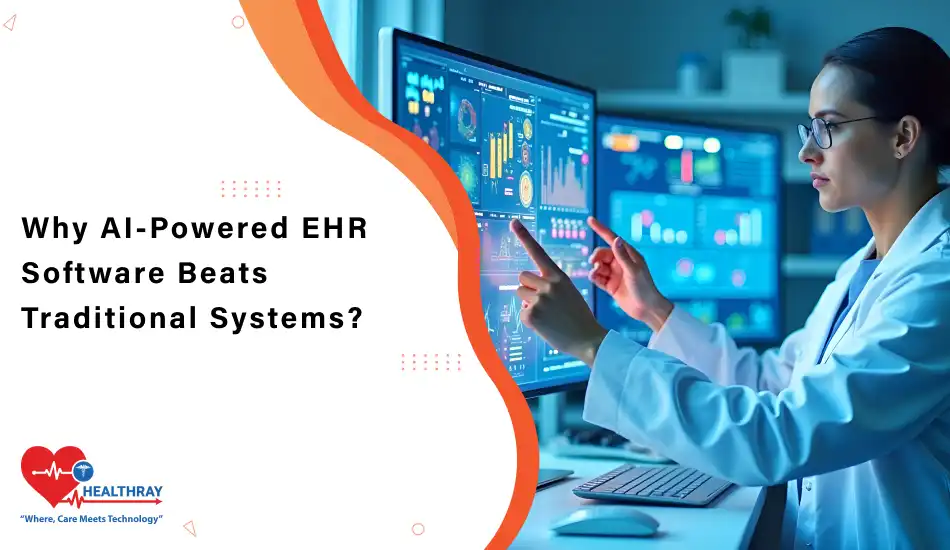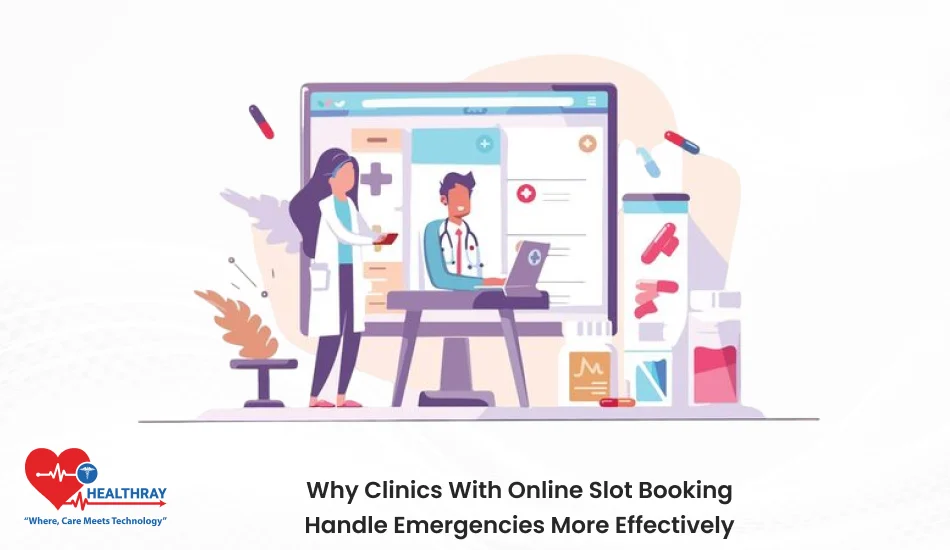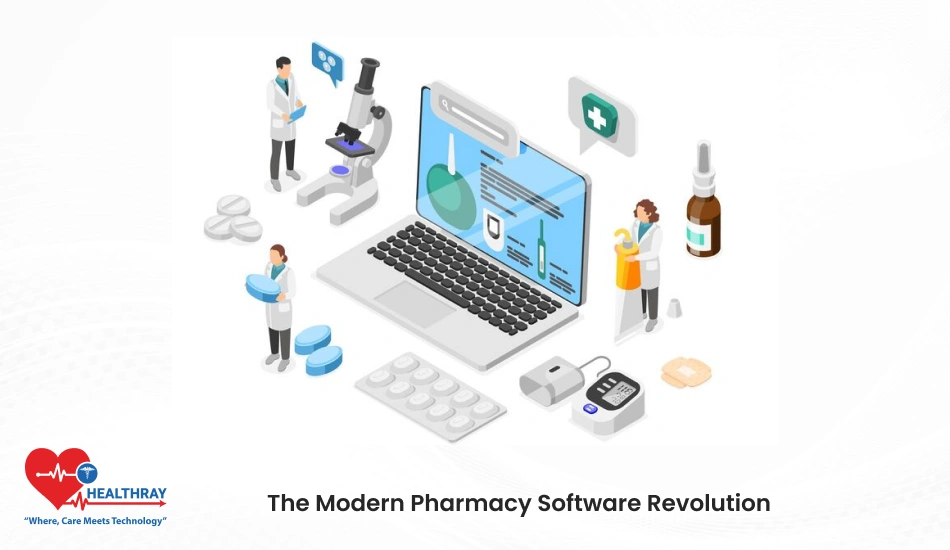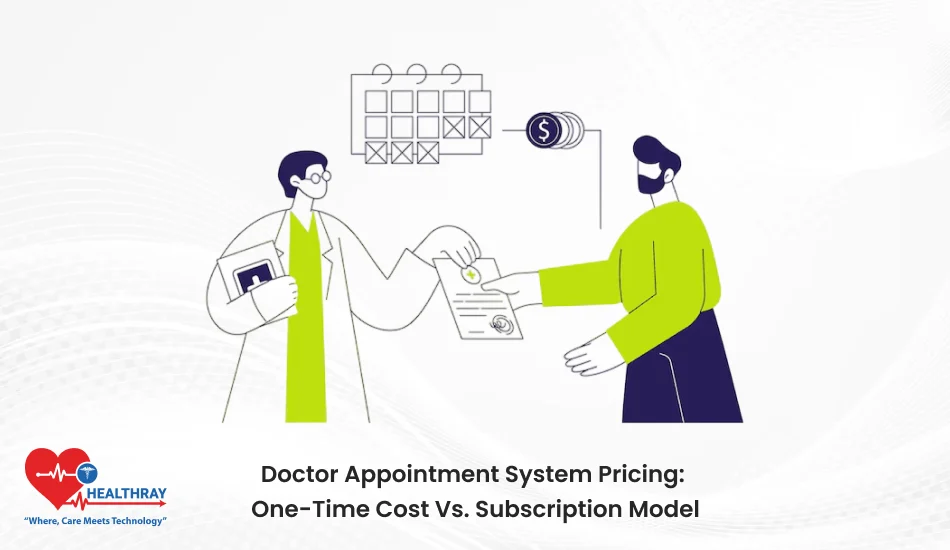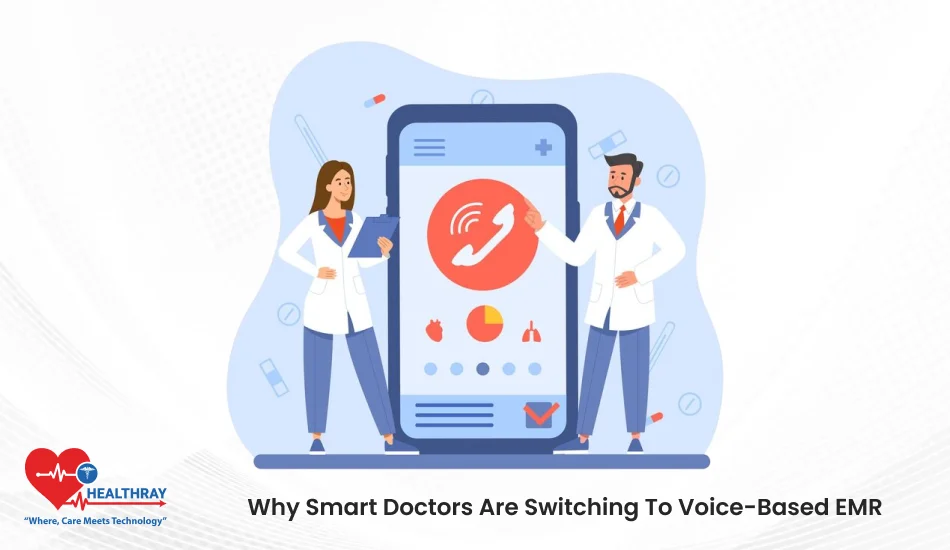What if medical records could think, even predict, even save a life?
No longer science fiction!
Seventy-one percent of hospitals were incorporating AI into their EHR (Electronic Health Record) systems in 2024, up from 66% in 2023. This incredible growth demonstrates the key role AI-powered EHR software can play in the transformation of healthcare.
Unlike the traditional EHR, AI-powered EHR software is able to understand every visit for each patient. They simplify data and support quick action on the part of doctors. For instance, it notifies the physician of an unexpected health concern, or it reminds the physician that an additional test must be taken. In this way, patient care is improved, and doctors are now saving much more time.
Also, AI-based EHR software is able to offer a better, faster and seamless hospital experience. Each recording and each insight is done in real-time. The system doesn’t just hold data; it knows data, and that changes everything.
In this blog post, we’re going to talk about the features and functionalities of AI-based EHR systems and why they are far superior to traditional medical records systems.
What is AI-Powered EHR Software?
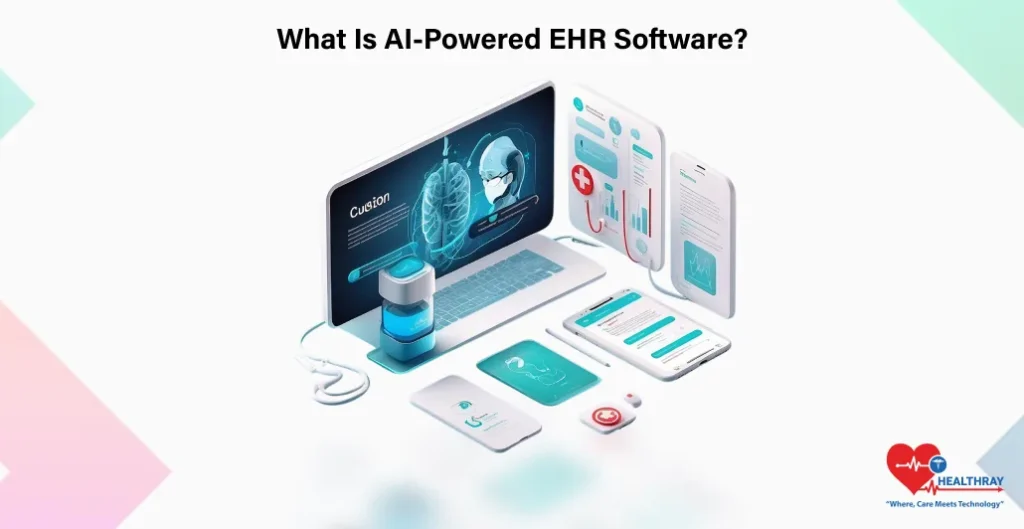
AI-powered EHR software is an intelligent system that utilises AI (Artificial Intelligence) to obtain and analyse information on patient health. It includes medical history, lab tests, prescriptions, and doctor notes. It is able to detect patterns, anticipate risks, and also “teach” health workers about their patients.
For instance, a 52-year-old man, Mr. Sharma has mild chest pain and visits the hospital. The hospital’s EHR system immediately pulls up Mr. Sharma’s entire medical history, along with his blood pressure, cholesterol and family history of heart disease. It examines lab tests and explores daily health data on apps that track smoking and exercise habits, including activities like walking, cycling, or trampoline workouts.
Through full data analysis, AI decides that blood pressure of Mr. Sharma is increasing, and it also attributes an increase in cholesterol levels. Instead, such factors allow the AI to predict the risk of heart disease. It sends an alert to the doctor who is then recommended the different kinds of tests, for example, ECG and stress test, to confirm the risk.
They provide an indication of developing heart disease at an early stage, and the physician’s response focuses on strategies that can prevent the condition, behaviour changes, and monitoring techniques. It also sends Mr. Sharma reminders to keep him on track with his care plan.
This is how the AI-based EHR can assist doctors in competent decision-making. It delivers individualised care to address major health issues prior to them becoming fatal.
Pain Points of Traditional EHR Systems
Most hospitals use traditional health record systems, but have difficulty keeping up with the demands placed on them. Examples of these are:
⦁ In traditional EHR systems, most information has to be typed by doctors and staff.
⦁ Typographical errors occur in patient records due to manual electronic health record entry.
⦁ Old EHR software is not able to analyse, find patterns, or predict health. They are also not linked to labs, pharmacies, or health devices.
⦁ Staff must be trained, and many traditional electronic health records software are complex to use.
⦁ They cannot manage a large number of patients well when the hospitals expand.
Benefits of AI-Powered EHR Software Over Traditional Systems
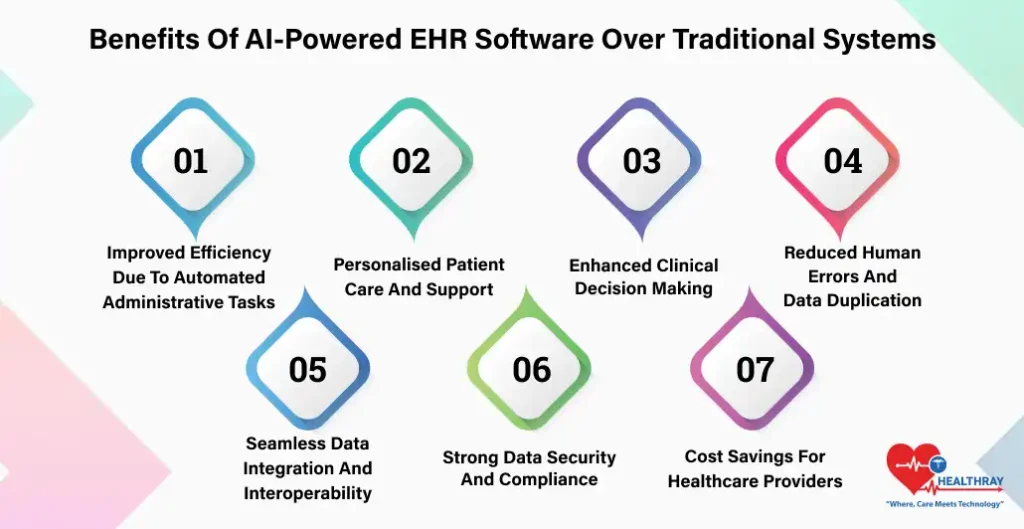
In comparison to regular systems, these AI-assisted solutions make hospitals run more efficiently while assisting doctors and staff in providing better care. The following are some of the distinct advantages AI-powered EHR software has in today’s healthcare.
Improved Efficiency Due to Automated Administrative Tasks
AI-powered Electronic Health Records Software has the ability to use an AI system to largely automate routine tasks of scheduling appointments, billing and filing insurance claims online. It’s the one that sorts documents, indexes medical history, and classifies data so that it can be used in an intelligent way. And thus, the time taken by the staff in looking for files or filling forms also become very less.
Automation also contributes to the elimination of slow work and the hastening of routine work. Doctors spend more time practising medicine than completing forms. Generally, AI streamlines hospital operations and makes them smoother and efficient.
Personalised Patient Care and Support
These EHR software typically include information on a patient’s test records, medical history, and ongoing medications or treatments. It also provides personalised care plans for the patient.
It can send doctors reminders for upcoming check-ups or even send an alert to a patient for follow-ups and preventive care. This means that it is possible for the doctors to treat each patient as a separate case. In other words, it makes sure that the patient is helped and guided in a personalised way.
Enhanced Clinical Decision Making
AI-powered EHR software can collect patient data to detect signs of disease early. It predicts health risks and informs doctors about high-risk patients in real time. Virtual assistants and chatbots can help answer basic questions for patients, reducing staff time. It is also possible for doctors to immediately access all health information from smart dashboards.
This simplifies communication between patients and health care providers. It is highly predictive, intuitive and easily understandable, making it possible for faster and more informed clinical decisions, fewer complications and overall care for patients.
Reduced Human Errors and Data Duplication
Manual entry often leads to errors and repeated information. Smart EHR software checks data for errors and does not duplicate records. This allows the patient’s records to be accurate, complete and reliable. They can trust that the information and important decisions can be made by doctors and staff.
Moreover, error prevention prevents treatment delays and improves patient safety. It is more accurate than manual data entry, making operations faster and easier, and preventing patients from having to go through errors more frequently.
Seamless Data Integration and Interoperability
AI-powered EHR software provides seamless connectivity for hospitals, labs, pharmacies, and other healthcare providers. For example, the EHR software makes its data formats uniform for use in other systems. The doctor can access patient records in real time, anywhere in the country where tests or treatments took place.
This real-time data sharing allows coordinated care and avoids repeated tests. It also fosters collaboration between different healthcare teams. With seamless integration, hospitals can provide consistent and continuous care that improves patient experiences and overall healthcare quality.
Strong Data Security and Compliance
Patients’ data are sensitive and must be protected. So, AI-powered EHRs monitor systems for potential threats and privacy breaches. It has encryption, secures data and follows the HIPAA and GDPR. Dedicated cloud storage allows you to access the cloud from multiple locations.
In addition, the software monitors changes in records so that the accountability issues can be resolved quickly. It also combines security, compliance, and monitoring to reduce risk for hospitals and patients. So, both doctors and patients feel secure knowing what information is safe and reliable.
Cost Savings for Healthcare Providers
An AI-powered electronic health record system is an efficient way to save money for hospitals. Automation reduces administrative costs and protects against human errors. The staff spend less time on paperwork, which reduces training and operational costs.
It also improves workflow efficiency, reducing time delays and unnecessary testing. If invested in AI-powered EHR Software Systems over time, the return on the investments is much higher than on old EHR systems. Low cost means that hospitals can allocate resources to better patient care, new equipment and sustainable staff development.
Real-Life Examples of AI-Powered EHR Software Assisting Healthcare: Case of Omega Healthcare
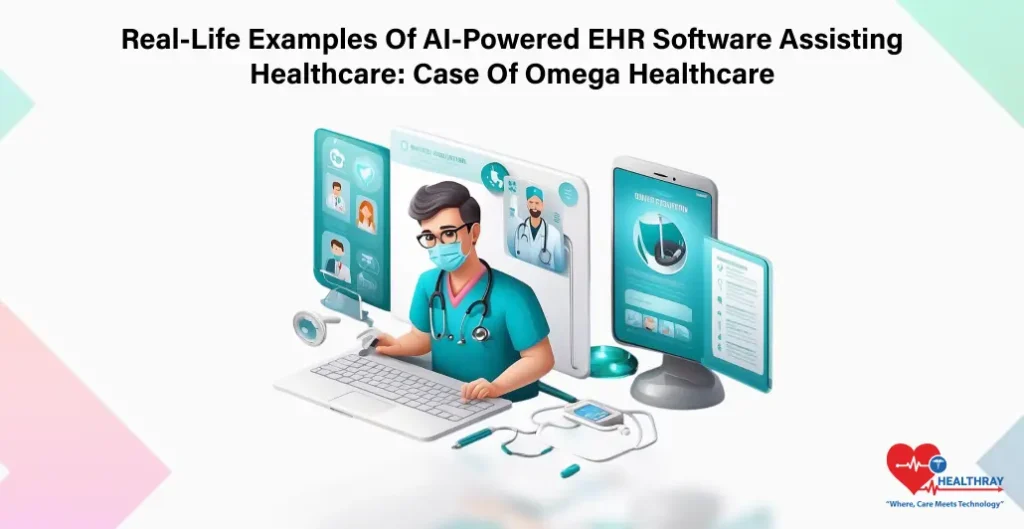
Omega Healthcare, the company which is the leader in providing RCM services to over 350 healthcare organisations, has successfully used AI-powered document processing to support its operation. Omega has been a partner with UiPath and has automated major administrative tasks such as medical billing, insurance claims processing and documentation. This strategic move has made a dramatic difference in operation and cost savings.
AI Integration and Operational Impact
Omega Healthcare has about 250 million customers annually. Although the firm had more than 30,000 employees, many of whom were already part of a regimen of repetitive administrative tasks, it aimed at improving efficiency and simplifying manual work.
By integrating UiPath’s AI-powered Document Understanding tool in its EHR software, Omega was able to automatically extract pertinent data from medical documents and insurance correspondence. This automated shift in routine tasks allowed employees to move beyond the work that they were doing and to a more decision-making approach.
Quantifiable Benefits
Since AI automation in their EHR software, Omega Healthcare has been highly profitable.
⦁ 15,000 Employee Hours Saved Monthly: Automation has saved over 15,000 employee hours per month, enabling staff to focus on more important activities.
⦁ 40% Reduction in Documentation Time: As it has been, documentation work has decreased 40 percent, prompting processes to accelerate and lower bottlenecks.
⦁ Half-Limb-Factory Change: The overall turnaround time for processing files has been reduced to a half-timed turnaround, thus getting claims resolutions faster.
⦁ 99.5% Accuracy: The AI system has also achieved a 99.5% accuracy rate in the extraction of data in order to reduce errors and ensure data security.
⦁ 30% ROI: Clients have reported 30% ROI because of efficiency improvements and reduced operational costs.
What Does the Future Hold for AI-Powered EHR Software?
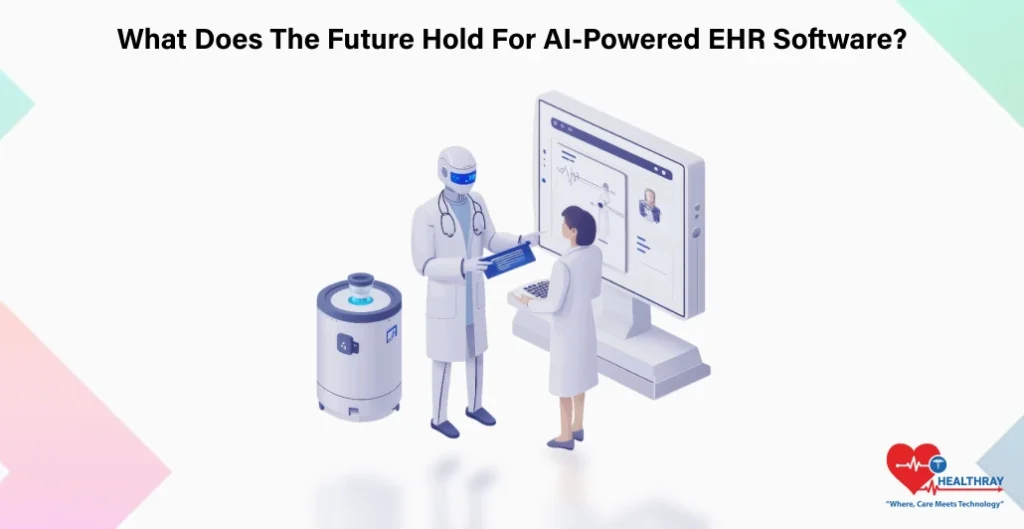
The future of healthcare, too, will come to rely on AI-powered EHR software. These systems will become smarter, faster and more intuitive. Hospitals and clinics will use AI in relation to record storage, health risks, management and improved outcomes in their services for patients.
The future uses of electronic health record systems will be incorporated into intelligent AI technologies that, over the next few years, include advanced natural language processing (NLP), machine learning (ML), and predictive analytics. This will allow the EHR software to read notes, lab results and imaging reports automatically. It will identify trends and provide actionable insights in seconds.
The doctors will be able to give more personalised care suggestions for each individual patient. AI-powered EHR systems will use past records, lifestyle data and gene data to advise preventive measures. AI will be used by hospitals to detect early symptoms of chronic illness, facilitating intervention when conditions worsen.
Another trend is ‘interoperability’. AI-powered Smart EHR software will enable hospitals, labs, pharmacies and wearable devices to connect more seamlessly. Data will be securely flowed across platforms to create a comprehensive health profile for each patient. The real-time integration will make healthcare teams more coordinated than ever.
The patient’s awareness will also be improved. AI assistants and chatbots in electronic health record systems will answer questions, schedule appointments, and help with health information. Healthcare providers will inform patients about their own progress and will help them follow up with treatment plans.
Security and compliance will also remain a priority. Future electronic health record software will be able to use AI to prevent risks, identify breaches and ensure compliance with more advanced regulations.
In addition to cost reduction, AI will improve efficiency in hospitals more than ever. This automation of administrative tasks will continue to save time, reduce errors and maximise resources. This will enable healthcare providers to focus attention on patient care rather than paperwork.
Conclusion
AI-powered EHR softwares are making healthcare more accessible. It stores, analyses and predicts patient data faster and more accurately than ever. EHR software also makes doctors more aware of their decisions and more efficient, and delivers tailored care.
These networks connect hospitals, labs and pharmacies seamlessly and keep data safe and consistent. Hospitals save time, costs, and improve patient experience. As technology advances, AI-powered EHR software will continue to transform healthcare and make it smarter, faster, and more proactive in the future.
